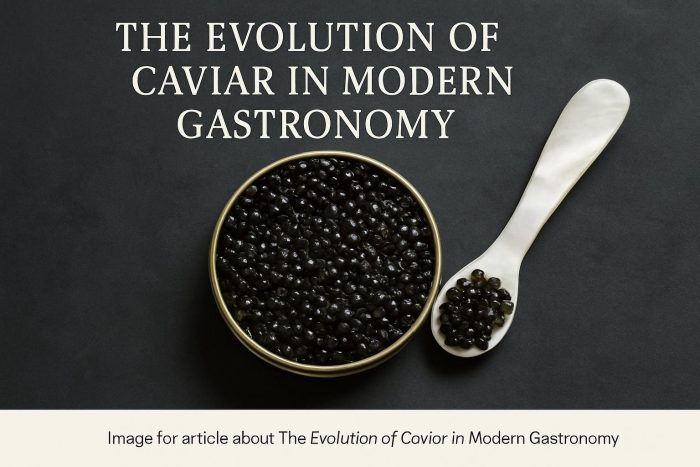The Historical Roots of Caviar
Caviar, a delicacy long associated with luxury and indulgence, has a rich historical lineage that dates back centuries. Traditionally, caviar refers to the salt-cured roe of sturgeon, primarily sourced from the Caspian and Black Sea regions. Sturgeon caviar, particularly from species like Beluga, Ossetra, and Sevruga, has been highly prized for its unique texture and flavor profile.
Traditional Caviar Varieties
Historically, the most renowned variety is Beluga caviar, distinguished by its large, soft eggs and delicate taste. Ossetra caviar is often darker with a firmer texture and a distinct nutty flavor. Sevruga caviar, the smallest of the three, is noted for its intense taste and is often considered the most economical option among classic caviar offerings.
The Shift in Caviar Sourcing
Overfishing and environmental changes have drastically affected sturgeon populations, leading to a significant evolution in the caviar industry. In an effort to mitigate the environmental impact, various conservation organizations have been involved in sturgeon protection initiatives. This environmental shift has pushed gastronomists to explore sustainable alternatives.
Farmed Caviar Production
The rise of aquaculture has led to increased production of farmed caviar, offering a more sustainable approach. Fish farms in countries like China, Israel, and the United States have started to dominate the caviar market. These farms utilize advanced technologies to ensure high-quality roe production while reducing the strain on wild sturgeon populations.
Siberian Sturgeon and White Sturgeon
Siberian sturgeon and white sturgeon are now frequently used in caviar production, offering firm textures and rich flavor profiles. Farmed caviar has gained acceptance among chefs and consumers alike, due to consistent quality and ethical considerations.
Modern Caviar Innovations
The contemporary culinary landscape has seen exciting innovations in caviar production and usage, broadening its appeal beyond traditional markets. Chefs and food innovators are experimenting with hybrid varieties and new presentation methods.
Infused and Flavored Caviar
Infused caviar, involving the addition of subtle flavors such as truffles or vodka, is becoming increasingly popular. This innovation caters to modern palates looking for unique gastronomic experiences.
Vegan Caviar Alternatives
Vegan caviar, often derived from seaweed or kelp, has emerged as an alternative for those seeking plant-based options. These products mimic the texture and taste of traditional roe, broadening the delicacy’s accessibility.
The Role of Caviar in Modern Cuisine
Caviar has evolved from a luxury product confined to fine dining establishments into an adaptable ingredient used in diverse culinary contexts. Chefs creatively integrate it into appetizers, main courses, and even desserts, reflecting the dynamic nature of modern gastronomy.
Caviar in Fusion Dishes
Fusing global cuisines with traditional caviar has resulted in intriguing dishes that appeal to adventurous diners. For instance, incorporating caviar into sushi or pairing it with unexpected ingredients like yuzu creates new taste experiences.
Accessible Fine Dining
The availability of farmed and alternative caviar has allowed more people to enjoy this delicacy. This democratization of caviar contributes to its widespread presence in contemporary dining.
The evolution of caviar in modern gastronomy showcases its adaptability and enduring appeal. Through sustainable practices and culinary innovation, caviar continues to be an integral part of the culinary world, marrying tradition with modern tastes.

